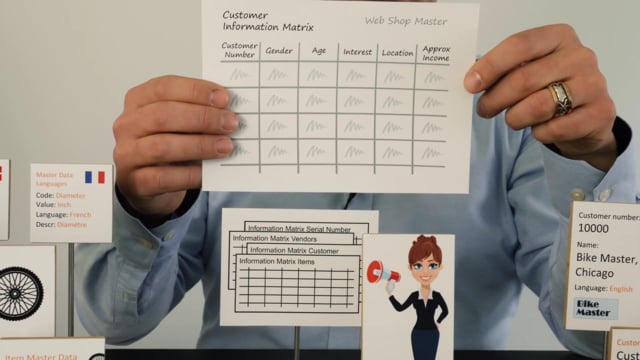
With master data information, it’s possible for our marketing person, Clara, to do segmentation on customers, and do meta data on items, which makes it very easy to work with data used on the web shop.
This is what happens in the video
So, for example, on the item side, it’s possible for Clara to define all kinds of master information, master data information, and text on items that we’d like to publish on the web shop.
On the other hand, on the customer side, it’s possible to do a lot of setup on the customers, telling all kinds of information about the customer that we like to use for segmenting the customer.
Let’s take here some example of that.
Because Clara could work with this information in the information matrix, which is part of the master data information, and it’s possible to automatically work with many dates, data at the same time, to update data.
Let’s take an example of that.
If Clara defines by herself some setup of columns that she’d like to work with, maybe she’s starting a B2B, or sorry a B2C web shop, she could, once you have the gender, and age, and interest, and location where the customer live, maybe approximate income, et cetera, and there’s no limit to what she could define of master data on the customers that she’d like to segment.
And in this view, it’s very easy to update many records across at the same time, and to get a very nice overviews of those things.

